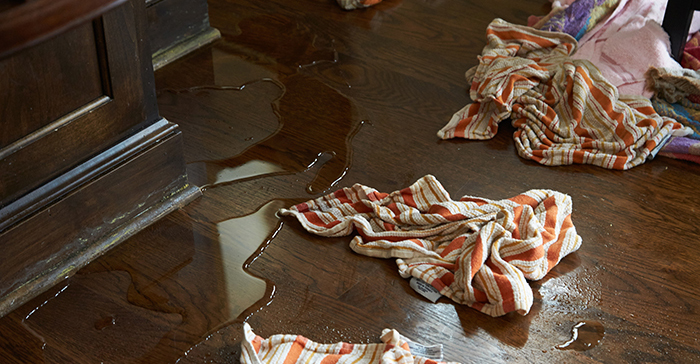The article author is making a few good points related to How to Prevent Bathroom Water Damage overall in this article below.

The bathroom is extremely prone for damp buildup and potential water damage because of the constant use water in it. This article provides basic assessment strategies to aid spotting water damage risks.
The regular use water in the washroom makes it extremely vulnerable for moist accumulation and prospective water damage. By checking it on a regular basis, you can lower water relevant problems.
The following set of evaluations is easy to carry out as well as must be done when in every 3 months in order to maintain your washroom healthy and also to prevent potential water damages caused by the bathtub, the shower, pipe joints and plumbing, sinks, cabinets, and the toilet
Do not overlook carrying out these evaluations as well as be extensive while doing them. Bear in mind that these basic assessments can conserve you a great deal of cash by supplying very early indicators for water damages
Tub as well as Shower
The shower and bathtub require special focus and also upkeep. Check the floor tiles and also change if split. Make certain that there is no missing grout between the floor tiles. Evaluate and also change broken caulking at joints where the walls meet the floor or the bathtub. Blocked drains and also pipelines issues will certainly avoid the bathtub from drying as well as may indicate serious troubles underneath the tub. Speak with a specialist promptly to prevent structural damages. Focus on discolorations or soft locations around the bathtub walls as they might suggest an internal leakage.
Plumbing
Signs for water damages are hard to identify considering that a lot of pipes are mounted inside the walls.
Pay special focus to flooring and wall surfaces wetness and also spots as they may show an undetectable plumbing problem. Examine moisture degrees in adjoining areas also.
Sinks and Cabinets
Sinks and also cabinets are revealed to wetness and also moisture daily as well as are frequently forgotten. Examine regularly under the sink as well as on the kitchen counter above it. Repair any kind of drip in the trap as it might suggest drainpipe issues. Check out the sink, sluggish draining pipelines may show a blocked drainpipe. Replace sink seals if they are fractured or loosened.
The Toilet
The bathroom is a vulnerable water junction. Examine the water lines and look for leaks around the bathroom seat, in the tube, as well as under the water container. If you spot any type of indicators of moisture on the flooring around the toilet, check for leakages in the toilet rim as well as container seals.
Understand that hanging bathroom dish deodorants boosts the opportunities for obstructions.
Water Damage Signs In The Bathroom To Avoid Cleanup
Musty smell
This is one of the easiest signs to catch because musty smells are so odorous. The damp, earthy, moldy smell should be a big red flag. The smell will develop when moisture gets trapped in surfaces, and begins to facilitate mold growth. Leaking pipes under cabinets, inside walls, and behind shower fixtures will cause moisture to stay trapped and not dry, which will lead to mold growth and spread. As soon as you notice any musty smells in your bathroom, have it checked for hidden water damage and cleanup signs.
Visible mold
If the smell isn’t there to give it away, sometimes you will actually see mold growth. Finding mold in your bathroom is a serious problem, because mold is very harmful to your health. By the time mold growth is visible, it also means that water damage has already occurred and been present for some time. The only way the mold problem can be resolved is to find the source of the moisture and get it stopped. To safely and adequately remove mold, you need to have professionals handle the remediation. Do not waste any time in getting mold problems addressed, fixed, and sanitized so that you can protect you and your family from the many respiratory symptoms caused by mold exposure.
Damaged floors
Bathroom floors should be able to withstand some exposure to water while still remaining in good condition. However, when excess exposure or water leaks occur, they will begin to damage even the most water-resistant flooring. If you notice any cracking, bubbling, staining, or warping on your bathroom floors, there is probably a water leak somewhere causing the distortion. If you notice areas of the floor have become softer, or even have a spongy feeling, there is probably damage to the subfloor. Subflooring is typically made up of plywood. When plywood is exposed to water or moisture, it will absorb it. Once it has become saturated, the weight of the excess water will cause the wood to swell and soften. Check the floors in your bathroom frequently to catch any of these sings before they lead to damaged subflooring.
Changes on walls
When water leaks behind walls, it will cause changes in the drywall. Peeling plaster, blistering paint, and soggy wallpaper are all good indicators that excess water is building up behind the wall. Water leaking behind drywall will cause it to swell and be soft to the tough. If you start to notice gaps along the trim of your walls, or where tile meets the wall, it could also be a strong indicator that there is a leak behind the wall. Any changes, distortion, or damage on the walls should be evaluated as soon as you notice it to prevent further water damage and cleanup.

I was guided to that article on How to Repair and Prevent Bathroom Water Damage from someone on a different website. Kindly take the opportunity to promote this blog post if you enjoyed reading it. Thank you so much for your time spent reading it.
Set Up An Appointment